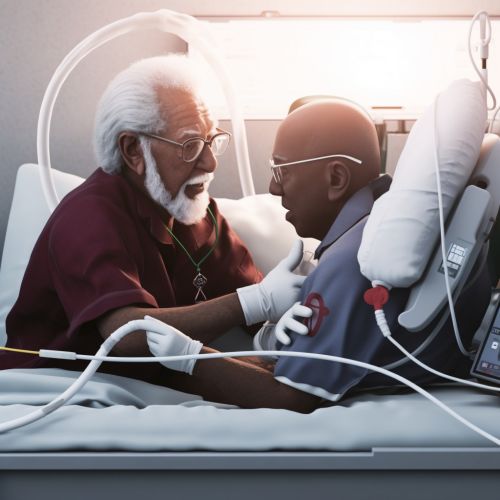Cardioversion
Overview
Cardioversion is a medical procedure that restores a normal heart rhythm in people with certain types of abnormal heartbeats (arrhythmias). The procedure involves the use of medications or an electric shock to the heart. This article provides a comprehensive and detailed overview of cardioversion, including its types, indications, procedure, risks, and post-procedure care.


Types of Cardioversion
There are two main types of cardioversion: electrical cardioversion and pharmacological (or chemical) cardioversion.
Electrical Cardioversion
Electrical cardioversion involves the use of a machine called a defibrillator to deliver an electric shock to the heart. This shock momentarily stops the heart, allowing it to restart with a normal rhythm. The procedure is performed under short-acting anesthesia or heavy sedation, ensuring that the patient does not feel the electric shock.
Pharmacological Cardioversion
Pharmacological cardioversion involves the use of medications, known as antiarrhythmics, to restore the heart's normal rhythm. These medications can be administered orally or intravenously. The choice of medication depends on the type of arrhythmia, the patient's overall health, and the presence of other medical conditions.
Indications for Cardioversion
Cardioversion is typically used to treat arrhythmias that are causing significant symptoms or pose a risk to the patient's health. The most common arrhythmias treated with cardioversion include atrial fibrillation and atrial flutter. Less commonly, it may be used for ventricular arrhythmias.
Procedure
The procedure for cardioversion varies depending on whether it is electrical or pharmacological.
Electrical Cardioversion Procedure
Before the procedure, the patient is sedated, and a local anesthetic is applied to the skin where the defibrillator pads will be placed. The defibrillator delivers an electric shock to the heart through these pads. The shock causes the heart to momentarily stop, allowing it to reset and resume a normal rhythm. The procedure typically takes less than 30 minutes.
Pharmacological Cardioversion Procedure
In pharmacological cardioversion, the patient is given antiarrhythmic medication orally or intravenously. The medication works by altering the electrical signals in the heart, helping it to restore a normal rhythm. The patient's heart rhythm is closely monitored during the procedure.
Risks
As with any medical procedure, cardioversion carries some risks. These may include:
- Dislodged blood clots: Some people with arrhythmias have blood clots in their heart. The procedure can dislodge these clots, causing a stroke or other complications.
- Skin burns: Rarely, the defibrillator pads can cause minor skin burns.
- Abnormal heart rhythms: In some cases, cardioversion can cause other heart rhythms problems.
- Reactions to medications or anesthesia: Some people may have adverse reactions to the medications or anesthesia used during the procedure.
Post-Procedure Care
After the procedure, the patient's heart rhythm is closely monitored. If the patient underwent electrical cardioversion, they might feel drowsy or confused for a few hours due to the effects of anesthesia. Regular follow-up appointments are necessary to monitor the patient's heart rhythm and adjust medications if needed.
See Also
- Arrhythmias - Defibrillator - Atrial fibrillation - Atrial flutter
